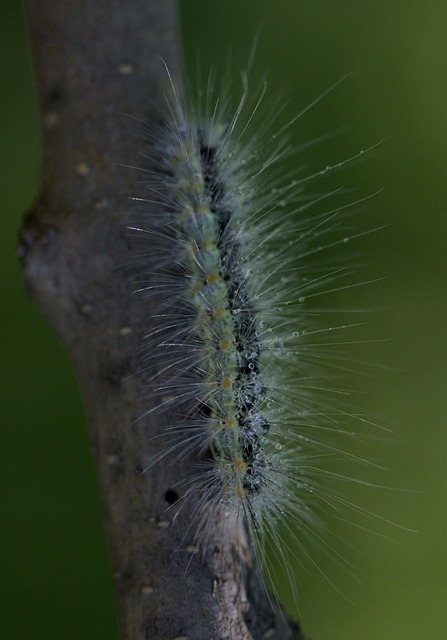Millipedes, attracted to damp, dark areas with moisture issues, can quickly infest homes and buildings. Effective millipede control services involve a multi-step process: identifying and sealing entry points, maintaining optimal humidity, and regular cleaning. Early detection is key; look for dark trails or damage to organic materials. Professionals conduct regular inspections, respond swiftly to signs of infestation, and employ treatments like pesticides or natural repellents. Proactive measures, such as monthly checks, sealing entry points, and strict hygiene, disrupt the millipede life cycle and ensure a pest-free environment.
Maintaining a millipede-free environment is crucial for any commercial or residential space. This comprehensive guide explores effective strategies for managing these persistent pests through ongoing maintenance plans. By understanding millipedes’ behavior and habitat, you can identify signs of infestation early on. We’ll walk you through developing tailored plans, conducting regular checks, and implementing quick response protocols with the help of professional millipede control services.
Understanding Millipedes: Behavior and Habitat
Millipedes are fascinating yet often unwelcome inhabitants of many environments, including homes and commercial spaces. Understanding their behavior and habitat is crucial in implementing effective millipede control services. These creatures prefer damp, dark, and secluded areas, making them prevalent in basements, crawl spaces, and other areas with limited ventilation. Their name, derived from their multiple legs, reflects their ability to move slowly but steadily, often appearing as a wave-like motion just beneath the surface. Millipedes are not typically aggressive but can become a nuisance when their populations grow out of control due to moisture issues or inadequate sanitation.
Regular inspections and maintenance play a significant role in millipede control. Identifying entry points and sealing them off is an essential first step. This includes checking for cracks, gaps around pipes and wires, and ensuring weatherstripping is in place on doors. Maintaining proper humidity levels through efficient ventilation and dehumidity systems can significantly deter millipedes. Regular cleaning, focusing on removing organic debris and sources of moisture, is another critical aspect of prevention. By combining these strategies, millipede control services can create an environment that discourages these creatures from taking up residence, ensuring a more comfortable and pest-free space for residents and businesses alike.
Identifying Signs of Infestation
Millipedes are tiny creatures that can quickly multiply and cause big problems if left unchecked. To prevent an infestation, it’s crucial to recognize the early signs. One of the most visible indicators is the presence of millipede trails. These trails often appear as dark, wavy lines on floors, walls, or even furniture, left behind by the scent glands of these insects. Regular inspections, especially in areas with high moisture content like basements or kitchens, can help identify these trails and any visible millipedes.
Another telltale sign is the damage millipedes can cause to fabrics and materials. They feed on a variety of organic substances, including paper products, fabrics, and even books. If you notice discolored or shredded items, it could be a result of millipede activity. Prompt action is essential; contacting professional millipede control services can help eradicate these pests effectively and ensure a millipede-free environment.
Developing a Comprehensive Maintenance Plan
Developing a comprehensive maintenance plan is key to achieving and maintaining a millipede-free environment. This involves regular inspections and thorough cleaning practices. Professional millipede control services recommend implementing strict hygiene protocols, such as regularly vacuuming floors and surfaces to remove any visible signs of millipedes or their eggs. Additionally, sealing entry points like cracks and gaps in walls, doors, and windows can prevent these creatures from infiltrating your space.
A well-structured plan should also include seasonal checks, as millipede activity tends to peak during certain times of the year. By combining proactive measures with professional interventions when needed, you can effectively manage and control millipede infestations, ensuring a comfortable living or working environment.
Regular Checks and Quick Response Protocols
Regular checks are a fundamental aspect of any millipede control service. Professional technicians should conduct thorough inspections at least once a month, or more frequently in areas prone to infestations. During these checks, they look for signs of millipedes like tracks, shedding skin, or live insects. Identifying the presence of millipedes early on is crucial for effective management. Quick response protocols must be in place once millipedes are detected. This includes sealing entry points, removing potential food sources, and treating affected areas with appropriate pesticides or natural repellents to prevent further infestation.
The key to successful millipede control lies in proactive measures. By implementing regular checks and swift responses, homeowners and businesses can disrupt the life cycle of these insects and maintain a millipede-free environment. Regular monitoring allows for early detection, which is essential for minimizing damage and ensuring a comfortable living or working space.
To maintain a millipede-free environment, regular checks and proactive measures are key. By understanding millipede behavior and habitat, as well as identifying signs of infestation early, property owners can effectively develop maintenance plans with the help of professional millipede control services. Regular inspections coupled with quick response protocols ensure that any potential issues are addressed promptly, preventing these tiny creatures from becoming a persistent problem. With dedicated care, it’s possible to create a comfortable and millipede-free space for all.
